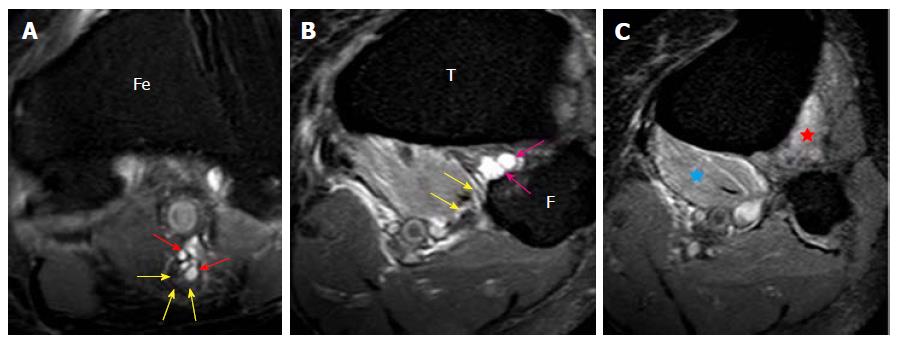Copyright
©The Author(s) 2017.
World J Radiol. May 28, 2017; 9(5): 230-244
Published online May 28, 2017. doi: 10.4329/wjr.v9.i5.230
Published online May 28, 2017. doi: 10.4329/wjr.v9.i5.230
Figure 5 Images A-C show serial, proton density-weighted fat suppressed axial images of the knee demonstrate the eccentric cyst (red arrows) within the epineurium of tibial nerve displacing the nerve fascicles (yellow arrows) which represents the “signet ring sign” (A).
The joint connection (pink arrows) is well appreciated where the cyst arises from the posterior aspect of the PTF joint. This represents the “tail sign” (B). The cyst (yellow arrows) extends along the posterior surface of the popliteus muscle into the branch to popliteus muscle. Denervation edema is seen in the popliteus (blue star) and tibialis posterior (red star) muscles. T: Tibia; F: Fibula; Fe: Femur; PTF: Proximal tibiofibular.
- Citation: Panwar J, Mathew A, Thomas BP. Cystic lesions of peripheral nerves: Are we missing the diagnosis of the intraneural ganglion cyst? World J Radiol 2017; 9(5): 230-244
- URL: https://www.wjgnet.com/1949-8470/full/v9/i5/230.htm
- DOI: https://dx.doi.org/10.4329/wjr.v9.i5.230









